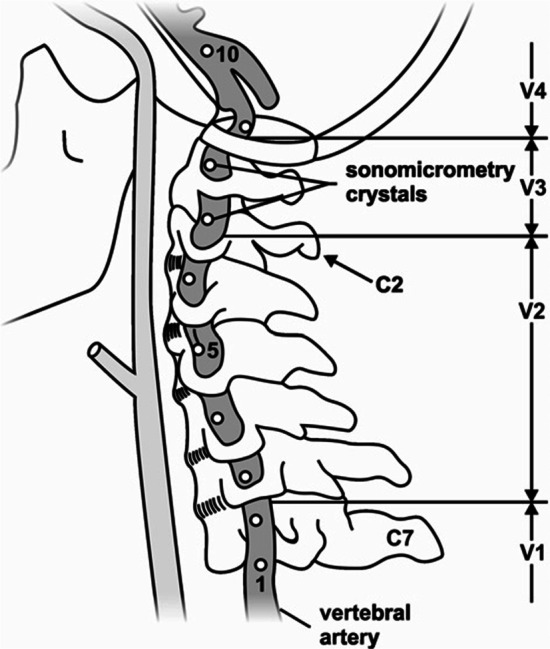

Vertebral Arteries Do Not Experience Tensile Force
During Manual Cervical Spine Manipulation
Applied to Human CadaversThis section was compiled by Frank M. Painter, D.C.
Send all comments or additions to: Frankp@chiro.org




FROM: J Man Manip Ther 2022 (Nov 15); 1–9 ~ FULL TEXT
OPEN ACCESS Lindsay M Gorrell, Andrew Sawatsky, W Brent Edwards, Walter Herzog
Integrative Spinal Research Group,
Department of Chiropractic Medicine,
University Hospital Balgrist and University of Zürich,
Zürich ,Switzerland.
FROM: J Electromyogr Kinesiol 2012Background: The vertebral artery (VA) may be stretched and subsequently damaged during manual cervical spine manipulation. The objective of this study was to measure VA length changes that occur during cervical spine manipulation and to compare these to the VA failure length.
Methods: Piezoelectric ultrasound crystals were implanted along the length of the VA (C1 to C7) and were used to measure length changes during cervical spine manipulation of seven un-embalmed, post-rigor human cadavers. Arteries were then excised, and elongation from arbitrary in-situ head/neck positions to first force (0.1 N) was measured. Following this, VA were stretched (8.33 mm/s) to mechanical failure. Failure was defined as the instance when VA elongation resulted in a decrease in force.
Results: From arbitrary in-situ head/neck positions, the greatest average VA length change during spinal manipulation was [mean (range)] 5.1% (1.1 to 15.1%). From arbitrary in-situ head/neck positions, arteries were elongated on average 33.5% (4.6 to 84.6%) prior to first force occurrence and 51.3% (16.3 to 105.1%) to failure. Average failure forces were 3.4 N (1.4 to 9.7 N).
Conclusions: Measured in arbitrary in-situ head/neck positions, VA were slack. It appears that this slack must be taken up prior to VA experiencing tensile force. During cervical spine manipulations (using cervical spine extension and rotation), arterial length changes remained below that slack length, suggesting that VA elongated but were not stretched during the manipulation. However, in order to answer the question if cervical spine manipulation is safe from a mechanical perspective, the testing performed here needs to be repeated using a defined in-situ head/neck position and take into consideration other structures (e.g. carotid arteries).
Keywords: Spinal biomechanics; cerebrovascular accidents; spinal manipulation; stroke; vertebral artery dissection.
From the FULL TEXT Article:
Acknowledgements
Author contributions
Funding
Ethics approval and consent to participate
Competing interests
REFERENCES:

Return to STROKE AND CHIROPRACTIC
Since 5-18-2023


| Home Page | Visit Our Sponsors | Become a Sponsor |
Please read our DISCLAIMER |
